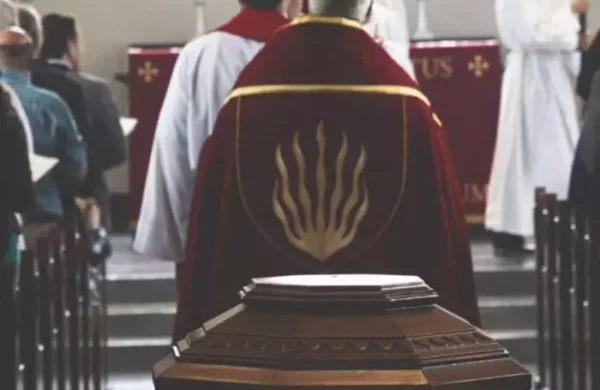
The word “Pentecost” comes from the Greek term “pent?kost?” which means “fiftieth.” Pentecost finds its roots in the Jewish holiday of Shavuot, which takes place 50 days after Passover and celebrates the giving of the Torah to Moses on Mount Sinai. Pentecost is a significant Christian holiday commemorating the Holy Spirit’s descent upon the apostles of Jesus Christ, marking the birth of the Christian Church.
Like this:
Like Loading...

Ascension Day is an important Christian holiday that marks the conclusion of the earthly ministry of Jesus Christ and his ascension into heaven. Observed 40 days after Easter Sunday, Ascension Day commemorates the moment when Jesus, after his resurrection, was taken up into the clouds before the eyes of his Disciples. This event is recognized in various Christian denominations around the world, each with unique customs and traditions. Let’s explore the significance of Ascension Day and how it is celebrated in different cultures.
Like this:
Like Loading...
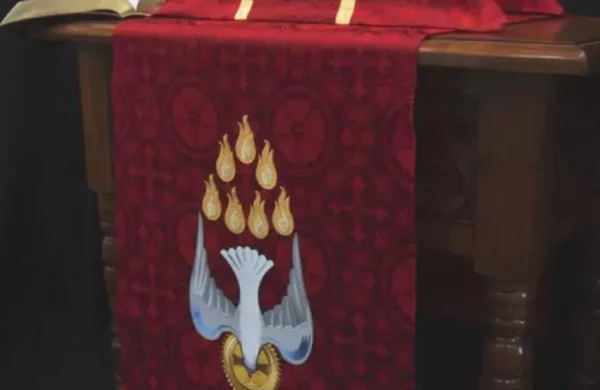
The use of the color red in the church during Pentecost is commonly attributed to its association with the flames of the Holy Spirit, which descended upon the apostles and other followers of Jesus Christ as tongues of fire. Red, as the color of fire and blood, is a natural choice to represent this element. The imagery of flames and fire is often associated with the Holy Spirit in Christian iconography, and red serves as a powerful visual reminder of the transformative power of faith.
Like this:
Like Loading...
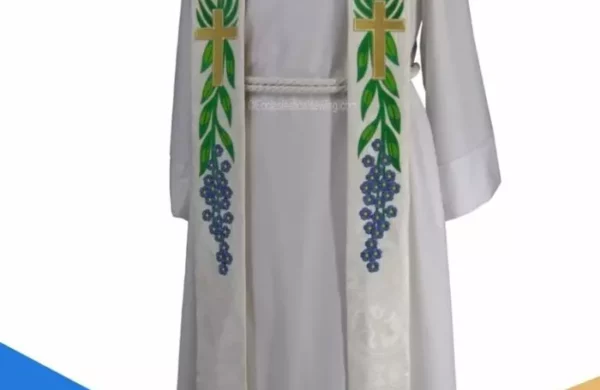
The white lilies and blue forget-me-nots held symbolic meaning. The dainty blue flowers asked the viewer not to forget God’s promises, while the white bursting blooms proclaimed the resurrection. They were attached to a bed of greens and a cross adorned the center of the stole.
Like this:
Like Loading...
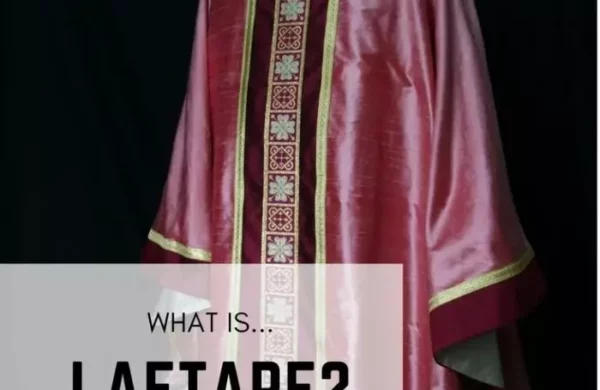
The word Laetare means “rejoice” in the Latin text of the word. Laetare was ultimately decided to be the name for this Sunday of rejoicing and celebration from the Latin text of the scripture verses found in the 66th chapter of the book of Isaiah.
The six-week season of Lent is overall a time of solemn and somber fasting spent in penance and preparation for the coming of Easter Sunday.
Like this:
Like Loading...
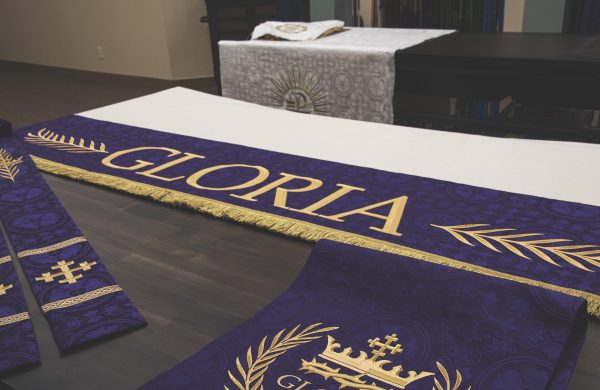
What are the symbols of Lent: Penitence to hope?
Ashes are probably one of the more recognizable symbols of Lent.
Churches that observe this, use purple vestments during Lent season.
Pretzels a Lenten treat that fits the dietary restrictions while reminding us to pray.
Fish on Friday and giving money during Lent.
What other symbols do you commonly see during this time of year in your church or in churches you have visited?
Like this:
Like Loading...
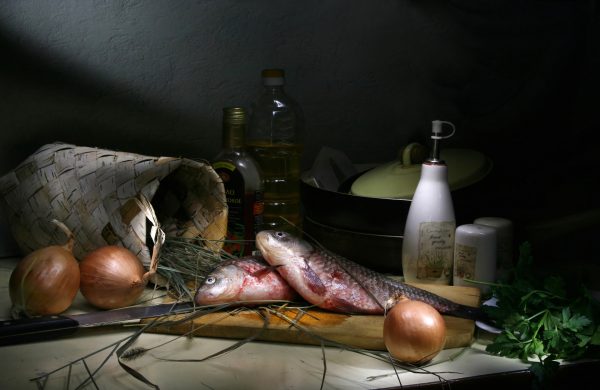
Fasting on Friday has been encouraged for a long time. But why Friday?
Eating fish on Friday is more or less a part of your upbringing.
Tradition tells us that this is the day when Jesus was crucified, and the idea is we’re giving up meat in remembrance of His sacrifice for us.
Like this:
Like Loading...
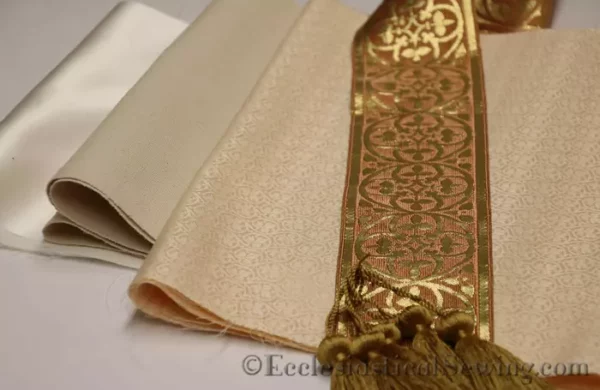
The choice of fabrics for creating vestments and altar hangings is a feast for the eyes, and different churches have different needs. The range of white church vestment fabrics available at Ecclesiastical Sewing for making church vestments is quite nice. White includes a broad range of colors: creams, ivory, deep cream, gold, and of course the stunning brocatelles with their shimmering gold highlights!
Like this:
Like Loading...
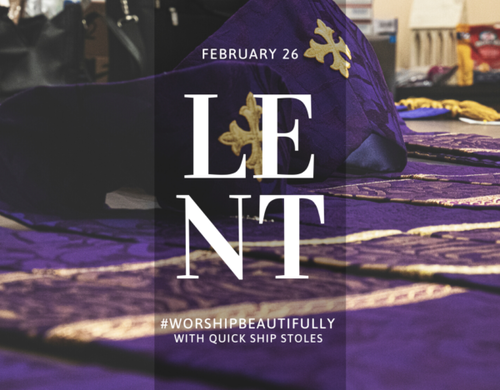
Purple in Lent symbolizes the royalty of Christ, His sacrificial death, and the season’s connection to Passover. The color, historically associated with royalty, was used mockingly on Jesus during His passion, emphasizing His royal dignity. Additionally, purple signifies the sorrowful nature of sins and the sacrifice made for redemption. Linguistically, “Lent” means “lengthen,” indicating its timing as days lengthen with the approach of spring and the season to observe Lent.
Like this:
Like Loading...
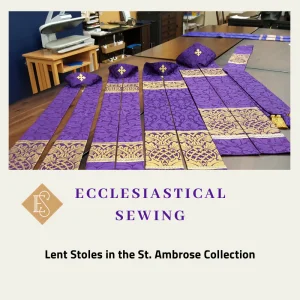
Some of our favorite fabrics, the richly historic pattern – Fairford, along with the Winchester Brocade. The Brocades are available in deep violet color. Violet is the color used by a wide number of church bodies during the season of Lent. The color violet is used for Lent because it is associated with mourning. We reflect on the mysteries of Christ and remember the pain and suffering of His crucifixion. Violet is also the color of royalty and it reminds us that we will soon celebrate Christ’s resurrection and sovereignty.
Like this:
Like Loading...
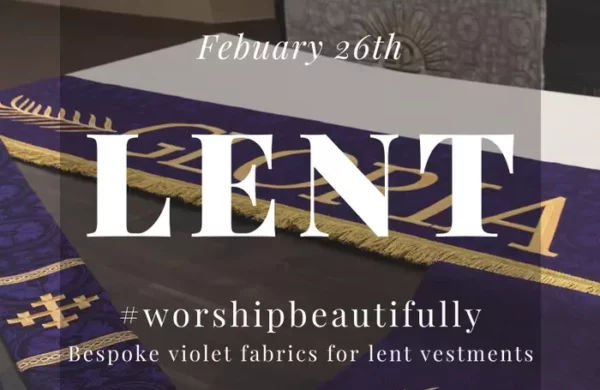
Violet is an appropriate color for Lent. It is associated with pain, suffering, mourning, and loss. Yet it is also the color of Royalty. Winchester is a wonderful Brocade Fabric. It has a nice hand and the weight is designed for use with hand embroidery and goldwork embroidery. It holds up well for machine embroidery. It drapes beautifully for chasubles and copes.
Like this:
Like Loading...
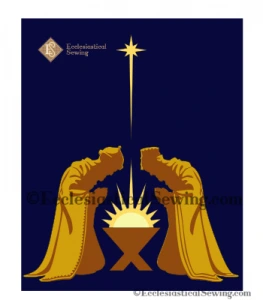
Epiphany is a feast day in the Western church, white vestments and paraments are used. Sometimes gold is substituted. There aren’t any specific Epiphany symbols, but there are often representations of the Three Kings elsewhere in churches.
Like this:
Like Loading...
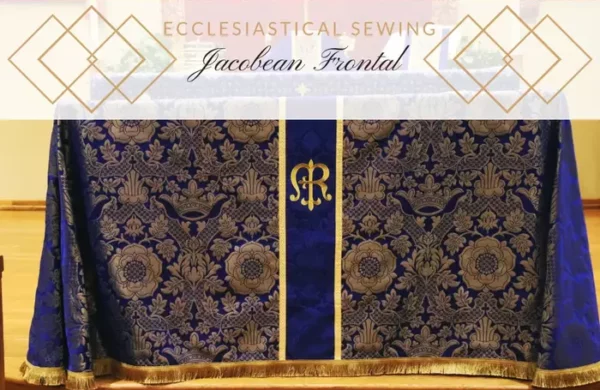
All feasts of Mary, as indeed are all feasts of all the worthies of the faith, are feasts that point to our Lord Jesus Christ and his work “for us and for our salvation.” Mary is our prime example of created humanity at its finest. She is humble but brave, courageous but modest, truthful and kind, upright and vulnerable, and unafraid to follow the leadings of God.
Like this:
Like Loading...
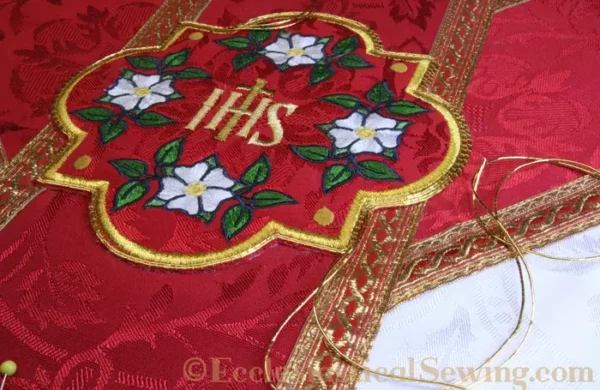
The use of a rose has been common sense since the 13th Century and is frequently used in Gothic wood carving as well as in hand embroidery. The Messianic rose can take on many forms. The design is part of a collection of vintage embroidery designs that date back to the late 1870s.
Like this:
Like Loading...
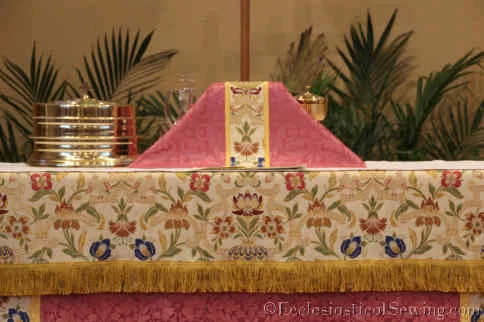
Rose vestments are used for two Sundays in the church year. Rose vestments are worn during the seasons of Advent and Lent. Gaudete Sunday is celebrated during the Season of Advent. Laetare Sunday is celebrated during Lent.
Like this:
Like Loading...

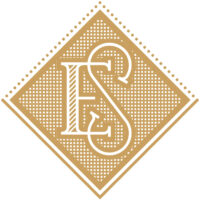














You must be logged in to post a comment.